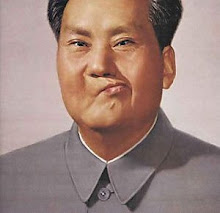
Similar to their non-Chinese counterparts, Chinese parents also feel that extracurricular activities are an integral part of making a child 'well-rounded'. Much to the child's surprise these activities are rarely of a physical nature.
Since Chinese parents place a monumental importance on their child's education, extracurricular activities are almost always of an academic nature. Similar to Chinese school, these activities take place on Saturday afternoons (often after Chinese school), further destroying the child's afternoon and preventing them from having fun with their non-Chinese friends. Otherwise, they take place after school on weekdays, successfully destroying any chance of 'hang-outs' with non-Chinese children.
The academic activities in question consist of math, English, music and occasionally art. In regards to math practice, the word Kumon will send a chill down any Chinese child's spine and conjure images of a steady, never ending, daily supply of booklets of math questions. After all, success in math equates to success in life. Occasionally, in areas with a high concentration of Chinese people, there are often community center like "academies" where children of all ages gather for math classes and English study (despite the fact they were born in an English speaking country). English study includes grammar practices in addition to writing essays that have no bearing on being a young adolescent.
A child expressing themselves through art (painting, illustration) is seldom encouraged as it is often seen by parents as a trivial pursuit that does not guarantee a job as medical, financial or technical professional. Should the child succeed and obtain a fulfilling career creating art, the parents will be proud, but will never fail to remind their child that, "still, being a doctor has better job security."
Musical pursuits are often encouraged, but only if the instruments involved are a violin or a piano. To a Chinese parent, any instrument outside of this duo of choices, frankly, do not exist. This will be covered in greater detail in a future post.
For non-Chinese people, these types of extracurricular activities are very much an oddity. While they were playing hockey, t-Ball, soccer and other various sports Chinese children were enjoying a full afternoon of math, followed by English, followed by violin and/or piano practice. This sad history history has been revealed in the hopes that future Chinese parents will not make the same mistakes as their elders. This information should also serve to provide a good reason for non-Chinese to understand fully why, "Kenneth/Linda can't come out and play" on such a lovely summer day.






